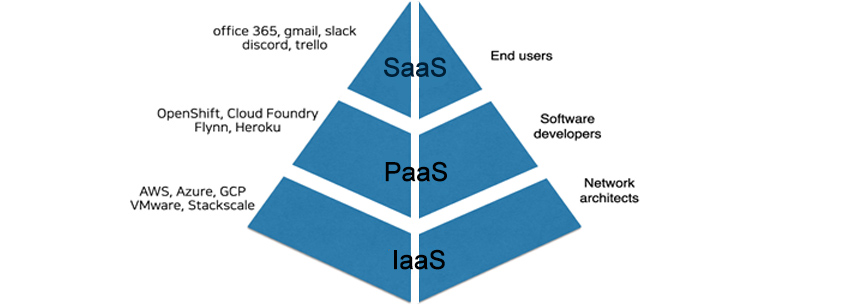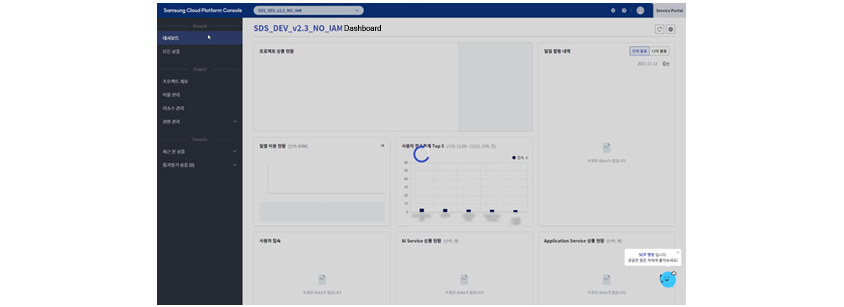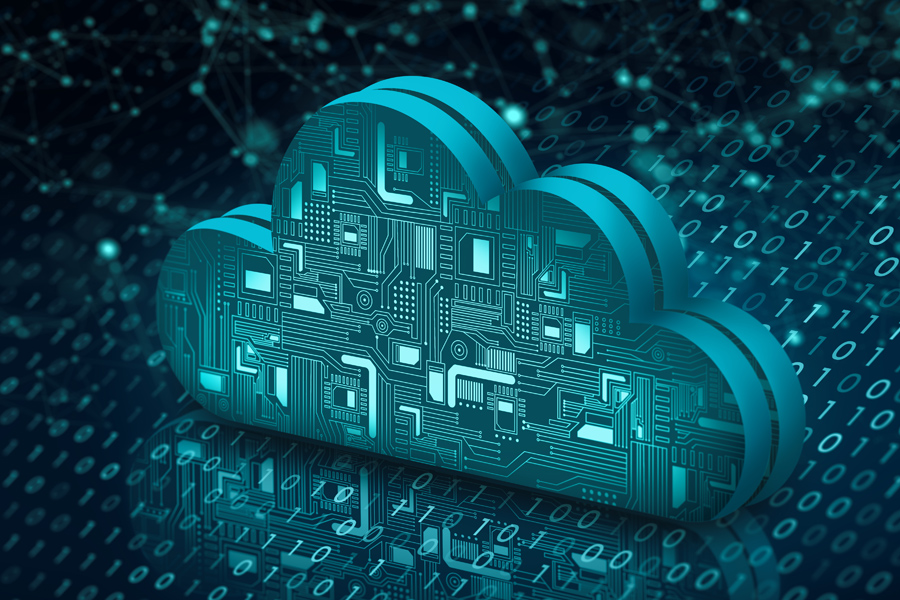
In a nutshell, the cloud is gobbling up everything. According to research from Gartner, global cloud market is as big as 593 trillion won in 2022 with a prospect of 1.7 times growth in 3 years, reaching 1,032 trillion won in 2025. The cloud market has been active for over 10 years with a continuous annual growth rate, which shows that the demand for the cloud market is consistent. Especially since COVID-19, the contactless market has expanded, not to mention online companies, but the conventional offline companies are competing to start digital transformation, causing the cloud market to grow even more rapidly. Along with the expansion and application of the cloud in all of the industrial fields, the need for cloud managed service providers (MSP) who manage the cloud is increasing as well.
Snowballing cloud industry
The top 4 companies with the biggest market capitalization in the world are Apple, Microsoft, Amazon, and Google. These four companies have a cloud business in common. Especially Amazon, whose main business is a shopping mall, has a cloud business called AWS, which makes up about 11% of the total sales with 25.7 billion dollars out of 232.9 billion, but its contribution to the overall business profits is as big as 73%. Also for Microsoft and Google, their cloud business is playing a huge role in practice. The cloud business makes their sales portfolio solid and drives their future growth.

- office 365,gmail,slack,discord,trello/End users
- OpenShift,Cloud Foundry,Flynn,Heroku/Software developers
- AWS,Azure,GCP,VMware,Stackscale/Network architects
If you had to point out a technical field in the global IT industry that has been continuously growing for 20 years and is still developing, it would definitely be the cloud industry. This market is already in intense competition among the world’s big tech companies: Amazon, Microsoft, Google, etc. Cloud computing, a field that leads the growth of the global IT industry, takes up nearly 60% of the market. Most IT companies use the cloud instead of their own data centers to build their services. One of the typical examples of this would be Microsoft Office. Microsoft Office programs, including Microsoft Word, PowerPoint, and Excel, have been installed on PCs as software. Actually in 2014, Microsoft Office software license sales took up 35% of total sales, whereas Office 365, the service sold through the cloud on a subscription basis, recorded 11%. However, in 2018, the proportion of Office software was reduced down to 20%, whereas cloud-based Office 365 increased its proportion to 30%. Also, Microsoft's market capitalization was insignificant compared to Google and Amazon in 2014, but around June of 2019, it outran them by growing three times over five years thanks to Office 365 and a cloud platform business called Azure. COVID-19 has helped those companies take a leap in 2020, and cloud business is also growing even bigger.
The value of cloud business is highly appraised since the faster speed of the internet caused on-demand, customer-oriented trends, generalizing the way data, services, or applications are installed in the cloud to be provided. In addition, not only the internet service providers, but the conventional manufacturers who seek digital transformation can use the cloud to build a computer system and operate IT resources to mitigate the pressure of initial investment, generating a steady increase in demand. Of course, startups with digital businesses can operate their businesses at low cost and at high speed, adding to the frequency of people using the cloud. The cloud industry is coming up with even more roses with the new internet-based businesses, such as electric cars or the metaverse. Especially since the cloud companies that are already settled are enjoying better network effects every day while the technological barriers to entry are high, new companies find it hard to enter the market. Hence, the companies are investing more aggressively and growing the market, and the value of cloud business is increasing every year.
The cloud business can be divided into three parts: IaaS, PaaS, and SaaS. IaaS refers to the service where you can rent computers and network resources as much as you need, whereas SaaS is to pay subscription fee for software and use as much as you need for as long as you need like, Microsoft Office. PaaS is a form of clouding computing where various solutions you need for your computing work are provided. SaaS is the biggest of the three markets, followed by IaaS and then PaaS. For example, Netflix is providing its streaming video service in SaaS to the whole world, but instead of building infrastructure with their own system, they’re using Amazon’s AWS. Also, domestically, internet services like Baemin and Toss are using cloud for their businesses. The vision for cloud business is expected to get bigger since the future growth of more mobile apps and Internet of Things-based digital services will require the cloud.
Rising need for MSP
The continuous growth of the cloud market calls for the expansion of related MSP markets. MSP gives consultation for cloud migration, design, development, and overall operation for companies who want to build the cloud. It means that it’s a service that builds and runs the overall system needed to use the cloud infrastructure of typical cloud service providers (CSP), such as AWS, Azure, or Google Cloud Platform (GCP), on behalf. As more companies are making use of the cloud and the range of application is continuously expanding, the roles and needs of MSPs are enlarging as well.
The domestic MSP market is estimated to be over 7 trillion won in 2022, and along with strong, conventional MSP businesses, such as Megazone Cloud and Bespin Global, large domestic SI companies, such as Samsung SDS, LG CNS, and SsangYong Information & Communications, and small and medium-sized companies are jumping in for real competition. Samsung SDS has especially declared its intentions for transformation into being a “cloud native” company by the end of 2021, and integrated IT departments into cloud service department and solution departments to focus on the cloud business. LG CNS is also putting effort into expanding its MSP business by declaring “the new MSP” business.
The MSP domains can be divided into connecting the existing system and cloud when giving consultations on the introduction and migration of the cloud, developing infrastructure, platform, and applications for complete migration, and most importantly, operating after the migration. Actually, the cloud is available for choosing from computing or internet resources as per customer needs, so if there are cloud experts in the company, you can directly use the cloud without going through MSPs. However, most conventional companies have been outsourcing IT infrastructure instead of internalizing it, so they’re not likely to have such experts. Also, companies are recently using multi-clouds rather than insisting on using one cloud to stably operate cloud systems, and the need for experts is even bigger to flexibly operate heterogeneous clouds. That’s why the roles of MSPs are becoming more important.
In fact, the biggest reason for the introduction of clouds is that you can build a flexible system that meets your requirements quickly at a low cost (in terms of initial investment). With the existing IT infrastructure, it’s almost impossible to provide systems at the right time and right place in accordance with the volatile business requirements, especially when the business environment is changing rapidly. For instance, the speed of developing vaccines for COVID-19 has become more important than ever, requiring the collection of clinical test data, quick analysis, and mass production unlike before, which comes with a need for equivalent IT systems. However, conventional computing system development or infrastructure is not enough to keep up with the speed. With the existing system structure, it’s hard to resolve issues, such as network infrastructure, that can handle sudden increases in traffic for the outburst of shopping orders and deliveries at Coupang or Market Kurly due to social distancing or supplementing applications and improving backend systems to meet the new requirements of new customers. That’s when the cloud proves its worth.
The cloud is equipped with various factors and resources that can support numerous requirements for the network, infrastructure system, or application upon request. Just like a grocery store where tens of thousands of products are displayed, multiple resources are displayed in the cloud for you to choose from as much as you need at the time you need them, and you just need to choose, introduce, and pay for how much you used. When you order from the menu in a restaurant, you get a complete product, but it won’t satisfy your taste 100%. But if you buy the ingredients yourself and cook them, you’ll get the best meal that is perfect for your taste. However, to cook such food you need to be an expert or have a personal chef to do that for you. For cloud and its ingredients, you need an MSP who can cook them to your company’s taste.
Public cloud booster, MSP
You need to check the following capabilities of the MSP when choosing one for consulting, building, and operating the overall cloud according to your business requirements. First, they need to have expertise in overall IT technology, not just the cloud. It’s compulsory to connect the previously operated system, or legacy infrastructure with the cloud to introduce or migrate to it. Furthermore, new cutting-edge IT technologies, such as IoT, blockchain, digital twin, big data, or AI need to be applied in accordance with the new, innovative requirements of the company. Therefore, they need technological capabilities on the entire legacy system and new ICT technologies beyond just the cloud.
Second, they need to be aware of the whole process of cloud migration. Introducing cloud goes through three stages: “Consulting Service (CS),” “Professional Service (PS),” and “Managed Service (MS).” In the CS stage, they need to clarify what the fundamental requirements of the company are for cloud migration, how their business strategy is changing and why the cloud is needed in the process, and what essential BM innovation factors they’re trying to resolve through the cloud. They need to start off on the right foot to recommend the cloud to migrate to, the connection plan with the legacy, and the modules to use in the cloud. In the PS stage, they organize what module of which CSP to use for the configurations of IaaS, PaaS, or SaaS according to the reviews in the CS stage, and at what level to connect and replace the existing system, database, and applications. In the last stage, the MS is operating and managing the migrated cloud. This means it supports various technologies and stabilizes the system so that it can work effectively. It also includes technical factors that the CSP does not provide, such as blockchain, security that is suitable for the company requirements, and overall operational management that immediately responds to errors. To have experience in the overall process and various references is an important capability of an MSP.
 A dashboard that can manage and monitor various cloud resources in real time provided by Samsung SDS to suit the customers’ tastes
A dashboard that can manage and monitor various cloud resources in real time provided by Samsung SDS to suit the customers’ tastes
Third, the MSPs should know all about the CSPs. They shouldn’t have limits to certain public cloud providers to recommend the optimal CSP resources upon company request. That is, they should know all about AWS, Azure, and GCP, and at the same time, be aware of the advantages, weaknesses, and characteristics of each of the SaaS provided by those clouds. Only then can they recommend the best system configuration as per the properties of the business. Furthermore, MSP should be equipped with the standardized templates, architectures, and governance to support operational management with a proper system rather than rough plans. Unless they operate the MSP with such references, they can’t stably operate the cloud system or quickly respond to customer requests.
The roles of MSPs who build and operate the general environment to help systematically stabilize the cloud for use are being enhanced with the growth of CSPs.
MSP competitions and game changers
The domestic MSP market has been led by three companies: Megazone, Bespin Global, and Metanet Tplatform. From 2020, large SI companies have taken part in enlarging the market even more. In fact, MSP business generates big sales, the actual profit is not much considering how much it pays to the CSPs. Megazone Cloud, the leading company in the industry, reached 900 billion won in sales in 2021 and made a turnaround in 12 years since they officially started the cloud business in 2009. Meanwhile, the second leading MSP, Bespin Global is still running deficits.
That has been troubling the industry. Especially as conventional companies are making their way into cloud-based system migration in a hurry, SI business is hastily jumping into the MSP market, but since most of the sales go to the CSPs, they're also working on securing independent sources of sales. In this respect, through project experiences in system integration (SI) and system maintenance (SM) with various customers, the SI companies can be substantive help for the competitiveness of the MSP business. Besides, like Samsung SDS, diverse ICT consultation experience, data centers which are cloud infrastructure, databases that can be connected to the cloud, and various ICT platforms enable an effective response to the complicated company requirements.
Above all, MSP business alone is not enough to secure market competitiveness or profits, so they try to maintain their competitiveness by supporting integrated connections between the overall legacy of IT systems other than the cloud and cloud services. In reality, since cloud migration cannot be applied to everything from A to Z, compulsory connection with the existing system or additional development of a new system is required for the new, innovative requirements that the cloud system can’t handle. For those reasons, MSP companies should understand various legacies other than the cloud and new technologies and have experiences in related technological projects.
The domestic MSP market went through its introduction and growth, and is now going into the maturity phase. In the process, professional MSPs already occupied and developed the market and have settled in. However, the existing medium- to large-sized SI companies are officially taking part in it to make new compositions. It’s expected that there’ll be a whole new level of competition based on the expertise of large SI companies, their sales skills and technologies, along with the M&As among the MSPs.
▶ The content is protected by the copyright law and the copyright belongs to the author.
▶ The content is prohibited to copy or quote without the author's permission.

He’s interested in and studying how technologies make changes in our daily lives and society, and how they can be used for BM innovations in companies.
